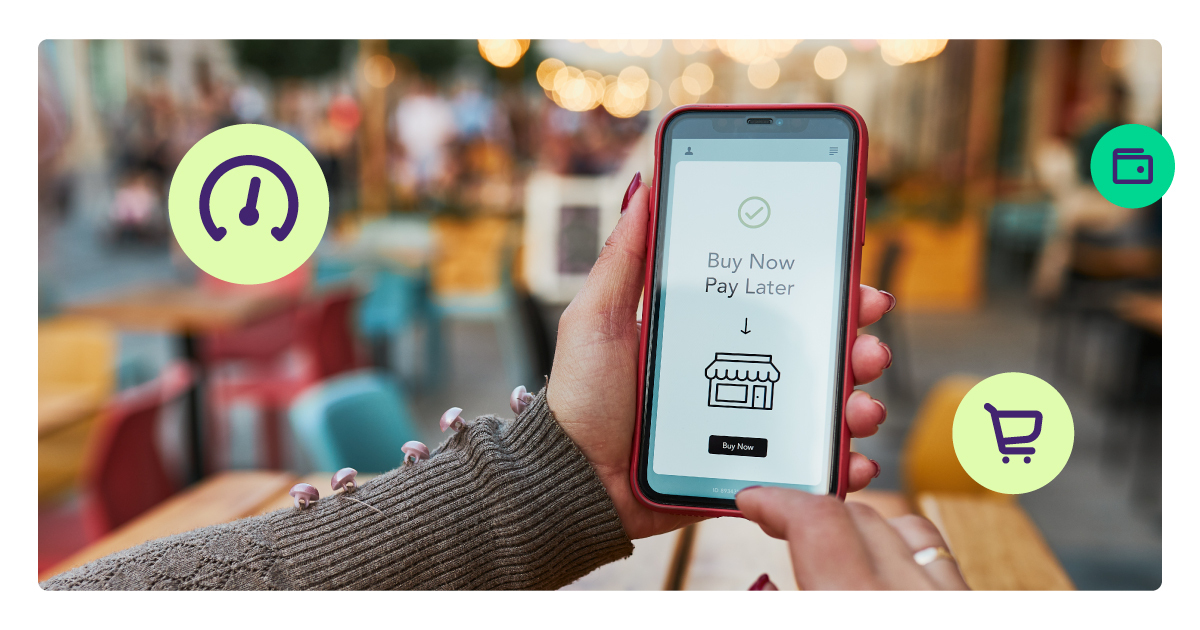In February 2025, FICO announced the development of a new system that incorporates buy now, pay later (BNPL) data into consumers’ credit scores. This system, which the company is preparing to roll out, marks the first big step into standardizing BNPL reporting — and closing the gap in how buyers view buy now, pay later in comparison to other credit products. The question now is how will the change in reporting impact consumers and how will they adapt, if at all?
BNPL Has Seen Significant Growth, But Reporting Is Way Behind
BNPL is a deferred payment plan that exploded in popularity during the global pandemic. It typically allows consumers to pay 25% upfront for a purchase and then pay off the remaining balance in three equal payments over six weeks, with 0% interest — known as the pay-in-four model.
While growth has tapered off in the last two years, it’s still positive. Today, roughly 9% of American consumers use this payment option, with expected peaks around the holidays. This percentage represents tens of millions of people across the U.S. opting to “pay-in-four” each year.
Like credit cards, BNPL payments enable consumers to defer the cost of their purchases. But, unlike credit cards, the tens of millions of BNPL accounts that have been opened since 2021 have never made it onto credit reports. That has created a significant and potentially damaging gap between how credit is being accessed and how it’s being tracked and reported — a gap that agencies are now looking to close.
BNPL Loans Will Be Included in Credit Scores Sooner Rather Than Later
The Consumer Financial Protection Bureau (CFPB) has been pushing for BNPL data to be included in credit reporting since its peak growth in 2022. But, to date, the big three credit reporting agencies (CRAs) — Equifax, Experian and TransUnion — have not included “pay-in-four” purchases in their models or used them for FICO calculations.
In February 2025, FICO announced it had developed a proprietary system to include buy now, pay later in credit scores and is now in the process of building a new scoring solution to roll it out. So, it’s no longer a question of whether the reporting gap will be closed, but rather how soon this data will start impacting consumer credit scores.
FICO and Affirm Analysis Outlines How BNPL Could Impact Credit Scores
To build its new scoring model, FICO ran a 12-month study involving data from 500,000 consumers. Using data from buy now, pay later provider Affirm, the study simulated what credit scores would look like if BNPL accounts were included in scoring models.
The study found that for 85% of consumers, having a BNPL account would result in a +/-10 point change in their FICO scores. Though, most people would see no change (or a slight increase). That number was consistent with a 2022 analysis by FICO, except the older study found that scores were more likely to go down slightly.
What BNPL Inclusion Means for Consumers
The inclusion of BNPL accounts in credit reporting comes with some potentially notable impacts. For the CRAs, more data means more accurate models. But, for the consumers who regularly use this credit option, the impact could be less positive.
According to the Federal Reserve, the average BNPL user tends to already have a lower credit score, higher revolving debt and a higher likelihood of past bankruptcies. And 21% of BNPL users cite it as being the only accepted payment method they had available. Until now, this technology has provided those consumers with a highly accessible and relatively low-risk deferred payment option. But the inclusion of BNPL in credit reporting could change that. Users may find themselves exposed to new risks that make the value offered by BNPL a lot less clear.
There Will Soon Be More Risk Involved in BNPL Purchases
The data from FICO and Affirm shows that BNPL accounts would have a minimal impact on credit scores when everything goes right. But what about when things go wrong? Missed BNPL payments now have the potential to significantly damage a consumer’s credit score, and each new purchase represents an opportunity for a missed payment.
While a traditional credit card is a long-term account that a consumer will maintain for years and use and pay off with a consistent rhythm, a BNPL loan is generally a discrete six-week proposition. That means consumers are taking on risks that could have long-lasting impacts on their credit in exchange for very short-term gain.
Even without a missed payment, BNPL accounts can lower your credit score — albeit minimally — by reducing the average age of your accounts. In general, the longer you’ve had a credit account open, the healthier your overall credit will be. So by adding a new account, such as BNPL, you risk a temporary dip in your credit score until it’s been open long enough to contribute positively as a long-standing account.
Score Impacts Are a Reminder to Consumers That BNPL Is a Loan
The 0% interest most BNPL purchases carry can lead to confusion among consumers about what this option actually is. Buy now, pay later is a credit product, full stop. And that 0% interest rate goes away very quickly once a payment is missed.
The danger lies in consumers utilizing BNPL without recognizing that they’re signing up for a loan. Decades of education and experience have helped consumers understand and manage the risks that come with credit cards. But, since BNPL is so new and so easily accessed, it will take time for people to appreciate that it carries its own risks. Including BNPL data in credit scoring could quickly help people better understand how these services affect their credit.
Credit Without the Rewards
BNPL loans offer zero interest for the duration of the six-week payment plan. In such a short time frame, what kind of savings does it offer over a traditional credit card? Even at a high annual interest rate like 24.99%, the interest accrued over six weeks is only about 2.88%. That’s immediately offset by the fact that BNPL purchases offer none of the rewards of traditional cards, like cash back or redeemable points.
So, while it may save consumers a very small amount of money, the potential financial benefit that BNPL offers over a credit card is actually much slimmer than it seems on the surface. Consumers also lose the benefit of protections offered by major card networks. For example, filing a legitimate charge-back can be much more complex and harder to win on a BNPL purchase.
These factors don’t play into the equation for underserved consumers for whom BNPL may be their only access to credit. For them, reported BNPL may actually become a critical avenue to building credit history and accessing wider options. But, for shoppers who have the option of choosing BNPL or a traditional card, the loss of rewards and protections may tilt things in favor of cards.
Will Impacts on FICO Scores Curb the Popularity of BNPL?
Ultimately, BNPL represents one more choice available to consumers. Only time will tell if the inclusion of BNPL data in credit reporting and FICO scores will change how often consumers opt to pay in four. For years, consumers have treated BNPL and POS loans like alternatives to credit, rather than just alternative credit. That is probably going to change.
If nothing else, the inclusion of BNPL in credit scores should help firmly cement the idea that this option is a loan, regardless of where it’s accessed or how quickly it’s approved. That should help consumers make more educated choices about how they pay and how they manage their debt.





